An exclusive aluminium race bike for € 7,300, in 2023? Why not, say Standert from Berlin and present the Standert Kreissäge, an aluminium road bike that promises to be fast, beautiful and high-quality. Is it reserved for the hipster community, or can it cater to the needs of actual racers? Our test shows what the Standert Kreissäge RS is capable of and who it’s for.

There was a time when all road bikes were made of steel. Then another era rolled in, and aluminium dominated the sales charts, that’s until the big C came along, and the carbon hype began. Today, you can find all kinds of drop bar bikes made of steel, aluminium, carbon, and even titanium. If you had to categorise them according to price and preconception, then aluminium road bikes somehow get put in the low-budget beginner box. According to this stereotype, all those who want an affordable bike and have little ambition are served well with aluminium. In addition, aluminium still has a 90s touch, like the Backstreet Boys, the Tamagotchi, and Claudia Schiffer. The aluminium Standert Kreissäge RS, however, proves that it’s worthwhile to think outside the box. An exclusive aluminium race bike for € 7,300, in 2023? Why not?! But can it perform or is it reserved for Berlin hipsters doing their after-hours rounds?
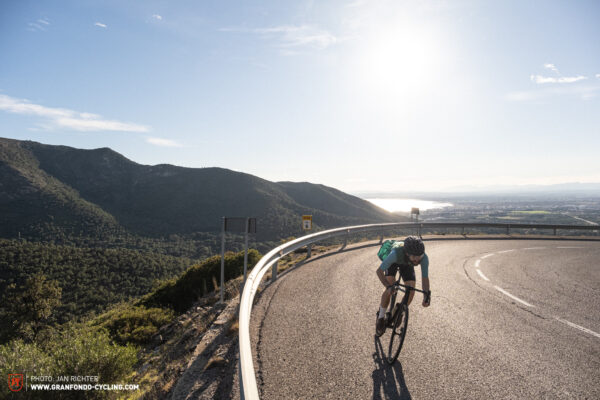
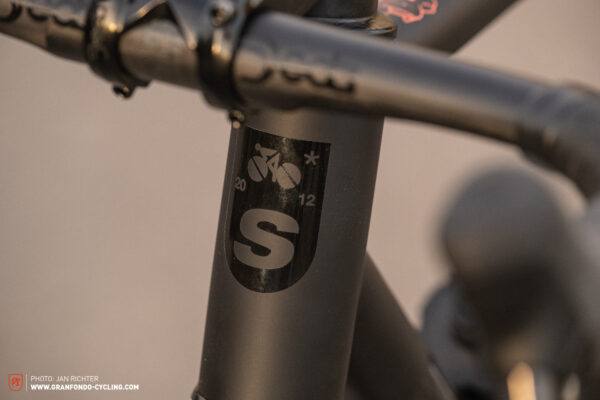
The Standert Kreissäge RS – Design, details and decoration
The Standert Kreissäge RS makes no secret of its intended use: racing! The look of the hip bike from Berlin exudes a sense of speed, pace and sprinting. As such, the UCI approval is no coincidence. It’s only upon closer inspection that most will notice what the Standert Kreissäge RS is made of. While the aluminium welds seams are visible, they’re very fine. However, the clean dropouts are sure to catch your eye. The classic design language is characterised by the straight top tube, complemented by modern components and full integration. On the one hand, the design is elegant and simple thanks to the matt black finish and glossy black branding. On the other hand, the many bright orange accents are a bit too much. Less conspicuous stickers would also go better with the tan-wall tires.
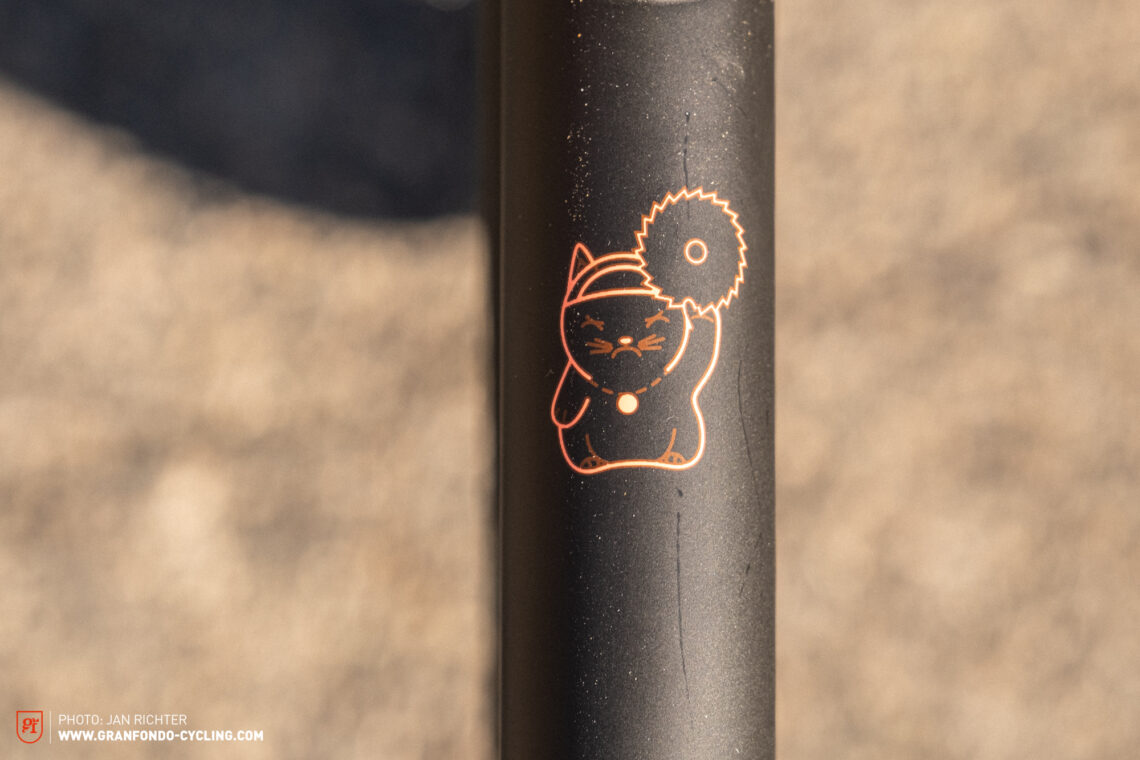
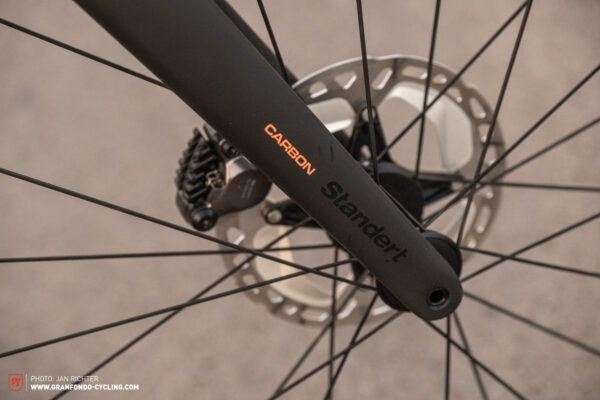
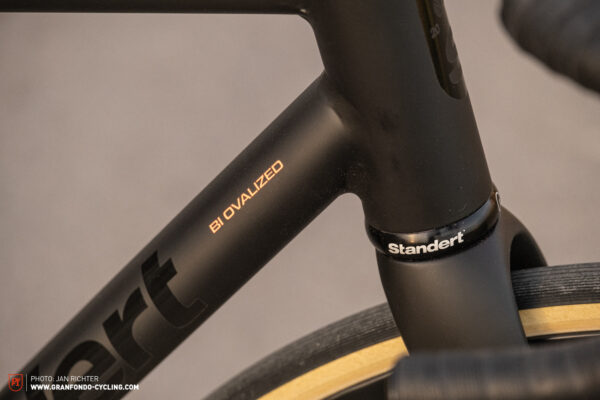
Components and geometry of the Standert Kreissäge RS
The Standert Kreissäge RS has more to offer than just good looks, also appealing to the tech nerds amongst us. For € 7,300, the model on test comes specced the Shimano ULTEGRA R8100 Di2 groupset, which can easily be regarded as the new standard on the Standert. After Shimano’s flagship Dura Ace groupset, it currently offers the best shifting performance on the market. The shifting is smooth, quick and precise, even under load. Compared to the OSPW (Oversized Pulley Wheel System) jockey wheels, bottom bracket, and headset from CeramicSpeed, the front derailleur clamp looks a little misplaced. To top it off, you get a waxed chain with the CeramicSpeed UFO Drip Chain Treatment. And if you’re an urban rat and don’t quite know what a circular saw sounds like, which is what a Kreissäge is in German, you can find out with the ARC 1400 DICUT wheelset from DT Swiss. The 50 mm deep rims suit the bike excellently both visually and functionally, and the freehub couldn’t be a better match since it sounds uncannily like a circular saw. All in all, this comes to a total weight of 8.2 kg.
Standert Kreissäge RS 2023
€ 7,300
Specifications
Seatpost Zipp Service Course SL Carbon 27.2 mm 20 mm
Brakes SHIMANO ULTEGRA R8100 160/140 mm
Drivetrain Shimano Ultegra Di2 R8100 2x12
Chainring 52/36
Stem Deda Vinci POB 120 mm
Handlebar Deda Superzero Carbon 400 mm
Wheelset DT Swiss ARC 1400 12 x 100/12x148 mm Through Axle
Tires Vittoria Corsa Graphene 2.0 700 x 28 28
Cranks Shimano Ultegra R8100 172,5 mm
Cassette Shimano Ultegra R8100 11-30T
Technical Data
Size 48 50 52 54 56 58 60
Specific Features
CeramicSpeed Parts
made of Aluminium
fully integrated
rearhub sound like a circular saw (Kreissäge)
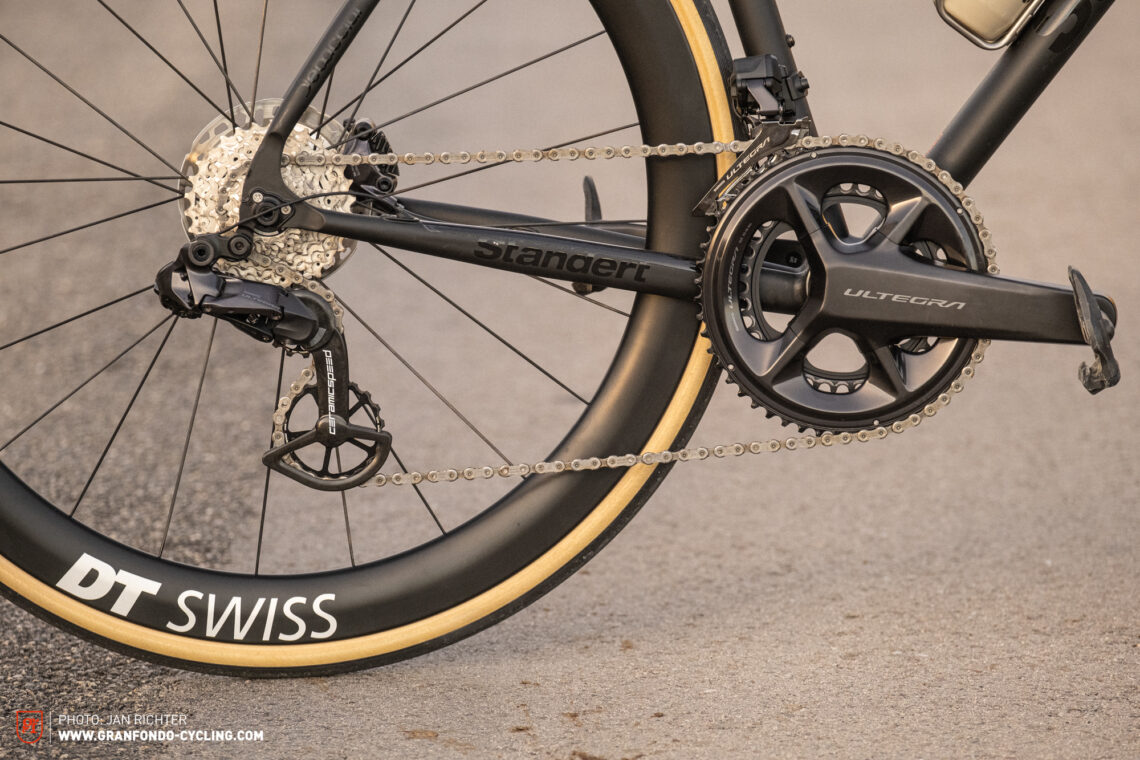

Considering the thoroughbred racing look, the geometry doesn’t harbour any big surprises. The stack to reach ratio of 1.4 is clearly on the sporty side, which is to be expected on a race bike. The combination of a 20 mm setback, negative 17 degree stem, and stem length of 120 mm results in a steep and aggressive riding position. This riding position isn’t just something you’ve got to want, but also requires the appropriate skills and fitness.
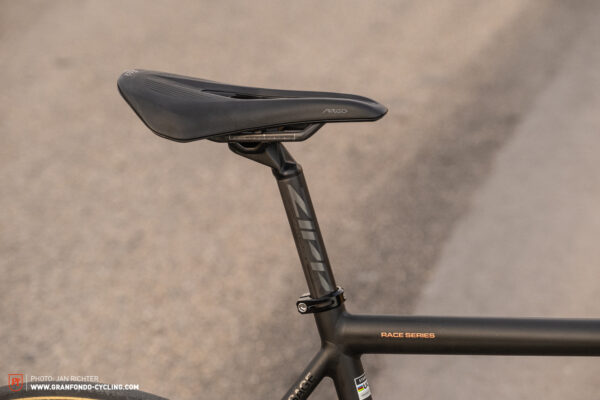
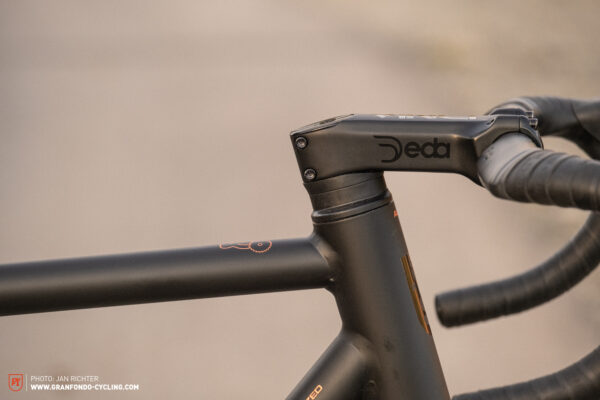
On the run – Riding the Standert Kreissäge RS
Let’s go! If you take a seat on the Standert Kreissäge RS, or rather lie down on it, considering the aggressive riding position, there’s only one way to go: full steam ahead! Due to the low and long cockpit, it feels so racy that you immediately start looking around for someone to overtake. The bike follows suit, consistently converting the rider’s input into propulsion. In an all-out sprint, however, the 8.2 kg Kreissäge won’t necessarily take the lead. Although the race bike does a good job of surging ahead, it’s not the fastest sprinter, brimming with liveliness. The marginal gains promised by the CeramicSpeed bottom bracket and oversized pulley wheels aren’t noticeable on their own, but they almost certainly have an influence on the fast feel of the bike. At the very least, they make you look fast, which makes you ride fast.
Tuning-Tipp: More comfort via a shorter stem and seat post without setback or less of it.
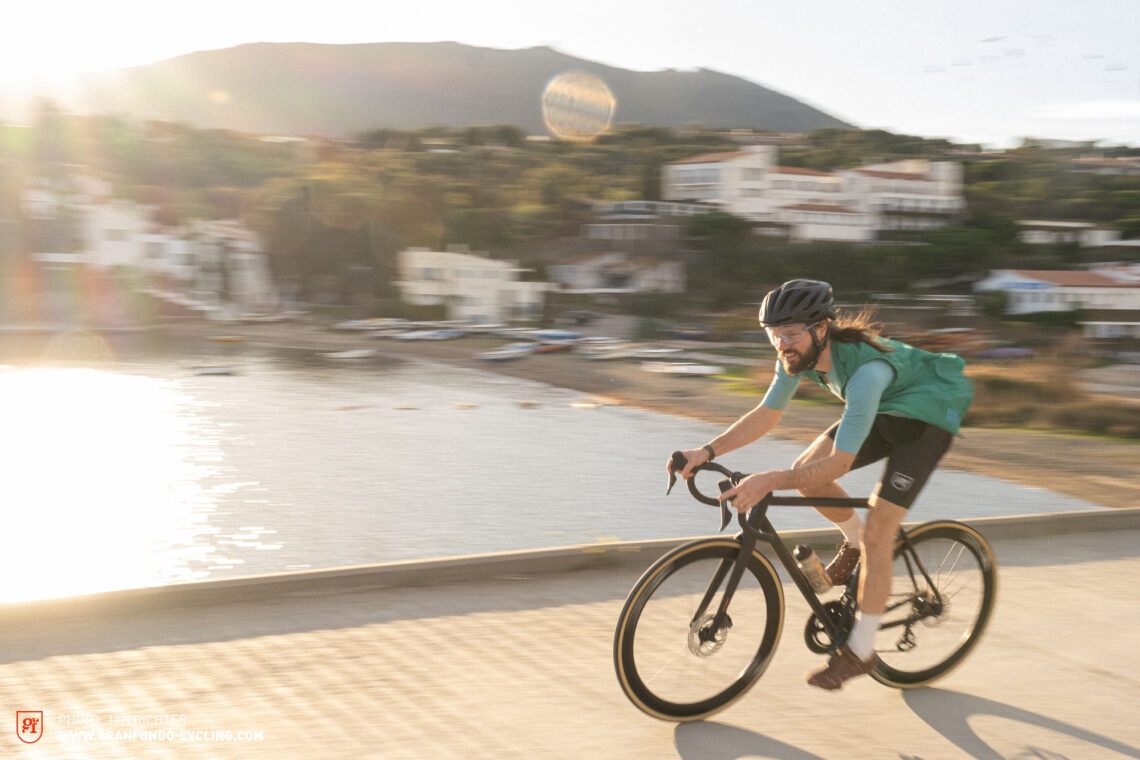
Fast cornering is something you’ll have to practise with the Standert Kreissäge RS. While the steering is responsive, the overall cornering behaviour is rather sluggish. On fast, winding descents, it takes a lot of effort to get the bike to corner. However, it makes for extremely stable and composed handling on long straights. On straight routes without corners, you can just fly along, but you’ll have to look ahead for the corners. When it comes to compliance, we don’t expect much from a purebred race bike like the Standert Kreissäge RS. Though it doesn’t feel quite as harsh as expected, we wouldn’t go so far as to say it’s plush, but overall, the comfort on rough roads is passable.
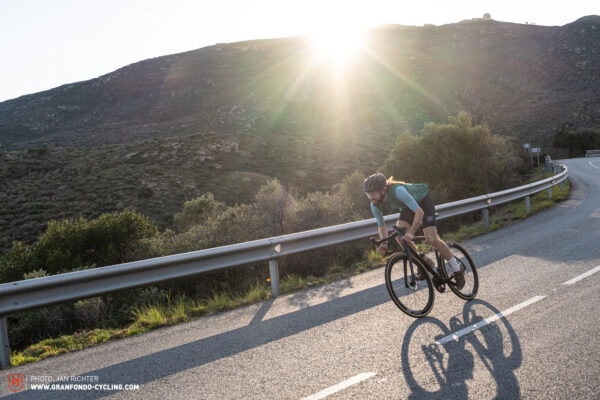

Who is the Standert Kreissäge RS for?
If you feel at home on the racetrack and can handle very aggressive riding positions, the Standert Kreissäge RS might just be the bike for you. Whether it’s a mass-start event open to everyone or a crit race, it doesn’t matter. All those who focus on speed and want an uncompromising race bike to match will get along well with the Standert Kreissäge. Besides that, it will also appeal to hip city dwellers who want an exclusive, high-quality road bike for their weekly post-work rides beyond city limits.
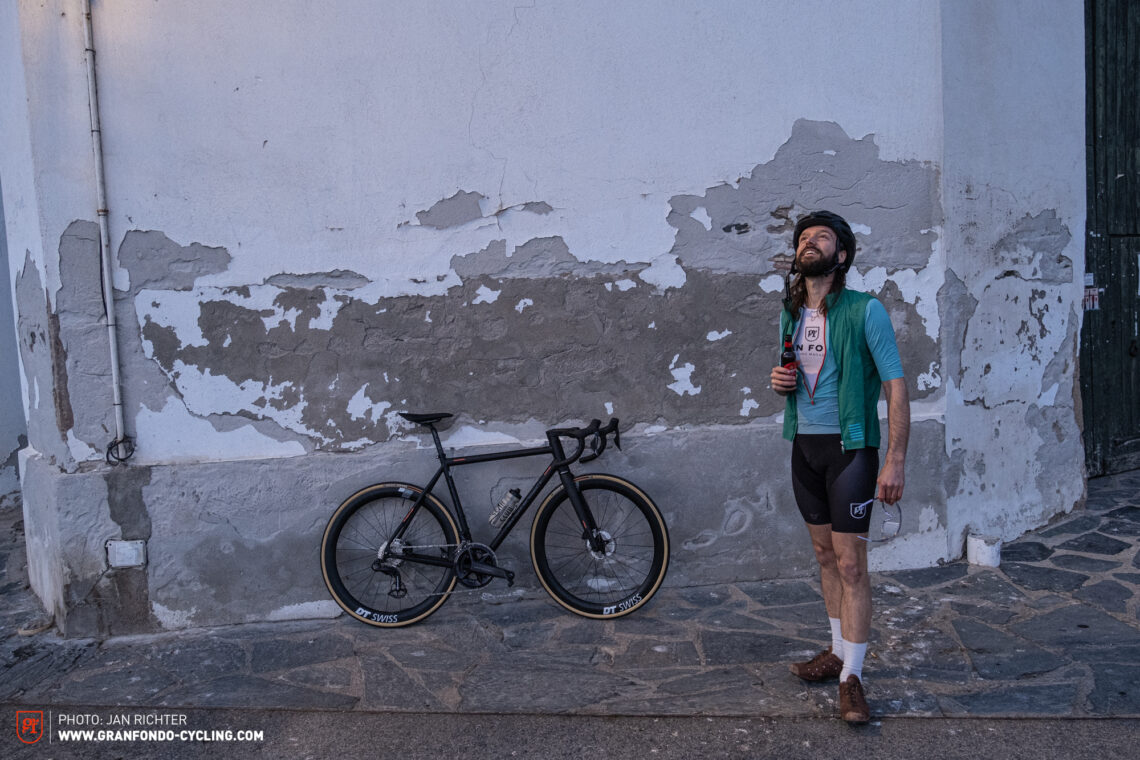
The Standert Kreissäge RS makes a strong case for aluminium, proving that it isn’t just for novices and entry level bikes. The race bike concept with its dynamic look, aggressive riding position and exclusive components is a success. However, all that speed, stretching, and tracking stability requires a skilled rider. The Standert Kreissäge RS feels most comfortable on flat, straight routes. That said, it will also do for a ride to the closest 24/7 shop for a late-night snack, of course.

Tops
- hot looks
- neat integration
- excellent shifting performance
- exclusive componentry details
Flops
- sticker overload
- weld seams aren’t ground down (unless you like the look of them)
Did you enjoy this article? If so, we would be stoked if you decide to support us with a monthly contribution. By becoming a supporter of GRAN FONDO, you will help secure a sustainable future for high-quality cycling journalism. Click here to learn more.
Words: Martin Staffa Photos: Jan Richter







